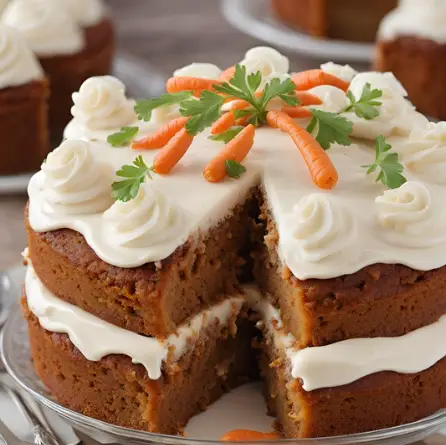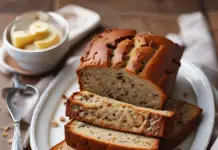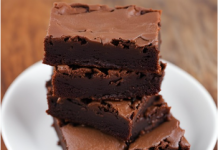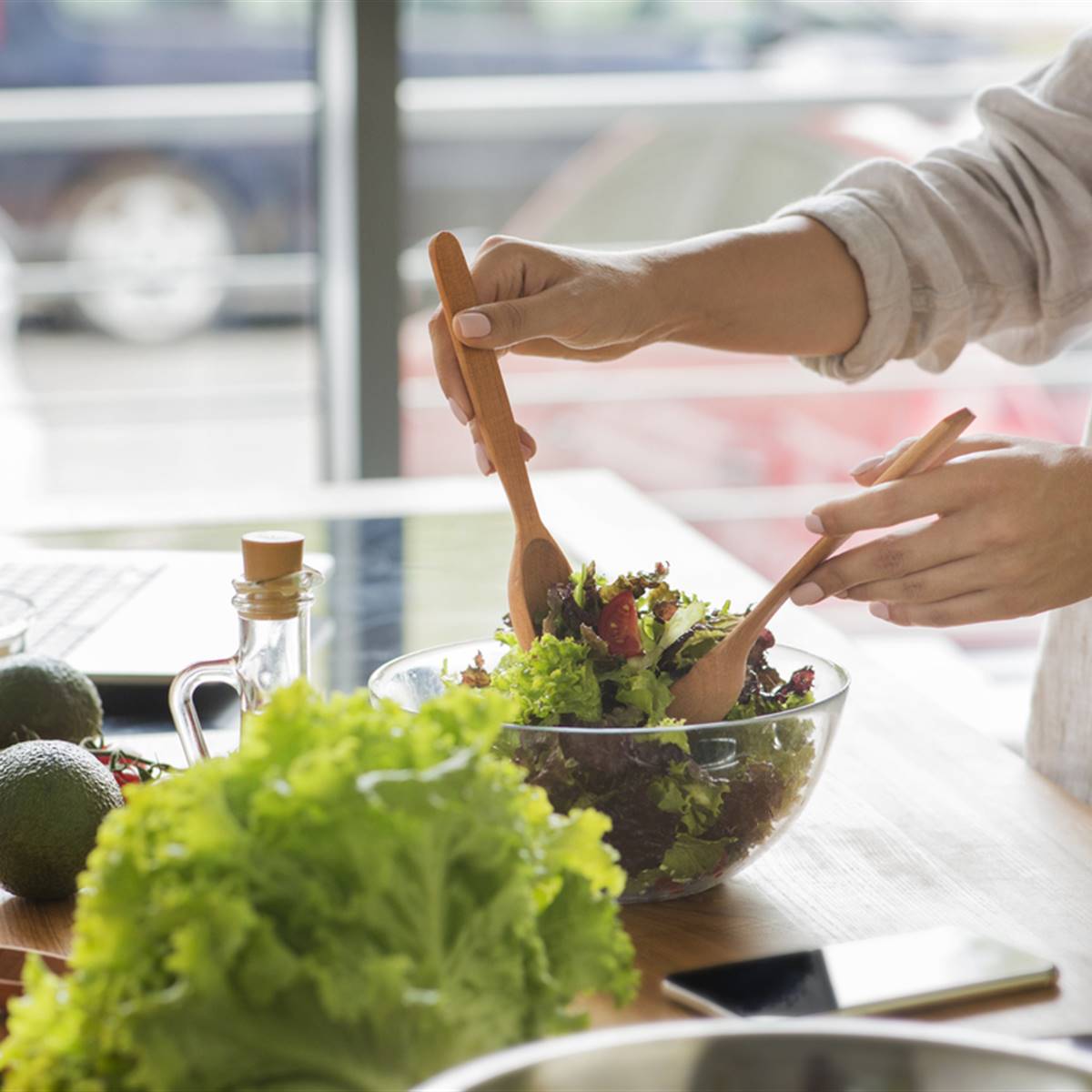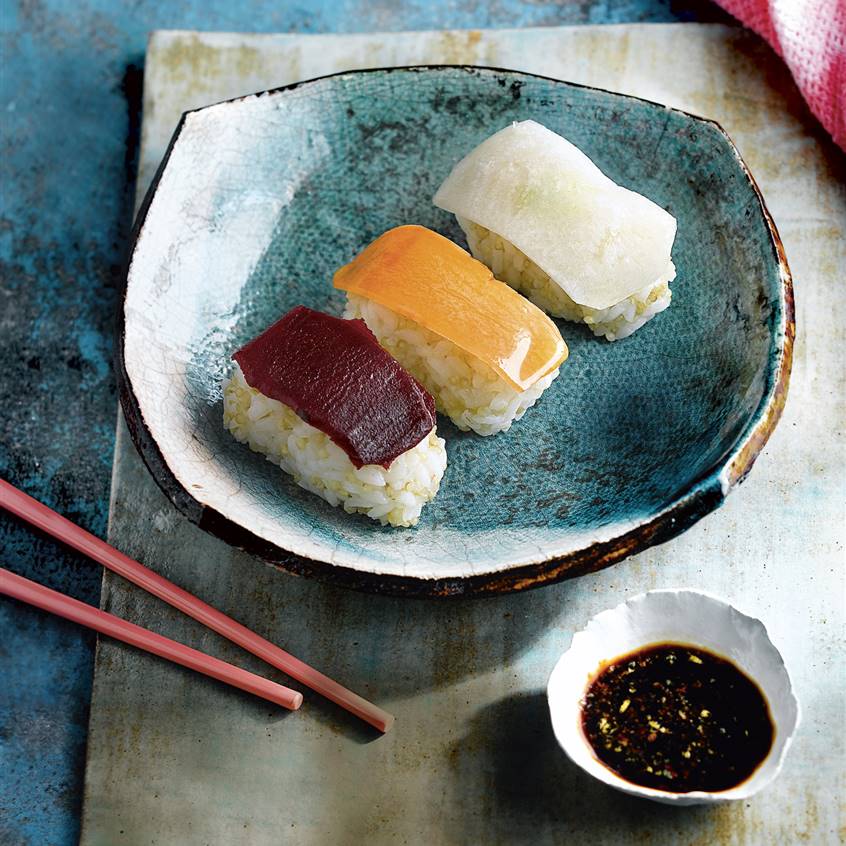Introduction
Carrot cake, a delightful dessert that has stood the test of time, is a perfect blend of sweet and spicy flavors that leaves everyone asking for more. This blog post will take you on a journey through the history of carrot cake, explore its ingredients and their unique flavors, and provide a detailed, step-by-step guide to making your own carrot cake from scratch.
The Rich History of Carrot Cake
The origins of carrot cake are believed to date back to the Middle Ages. Sweeteners were scarce and expensive during this time, so people used carrots as a substitute because of their natural sweetness. The first recorded carrot cake recipe comes from a 19th-century French cookbook. However, it wasn’t until the mid-20th century that carrot cake gained popularity in the United States, during World War II, due to rationing.
The carrot cake we know and love today has evolved significantly from its medieval origins. The early versions were more like carrot puddings, steamed and served with a sauce. It was only in the 18th and 19th centuries that carrots found their way into baked goods. The carrot cake gained popularity in the U.S. during the health food movement of the 1960s, as it was seen as a healthier alternative to other cakes due to the inclusion of carrots.
The Magic of Ingredients and Their Flavors
Carrots
The star ingredient of this cake, carrots, provide a subtle sweetness and a moist texture. They’re also packed with beta carotene, which gives the cake a lovely orange hue. The use of carrots in baking dates back to medieval times when sweeteners were expensive and hard to come by. Carrots, with their natural sweetness, were often used as a substitute. In a carrot cake, they add not only sweetness but also a unique texture and moistness that sets this cake apart from others.
Flour
All-purpose flour serves as the base of the cake, providing structure and a soft crumb. The flour works together with the other ingredients, binding them together, and ensuring the cake rises properly. The type of flour used can also affect the texture of the cake. For instance, using cake flour can result in a lighter, more tender crumb.
Sugar
Granulated sugar adds sweetness to balance the spices. Some recipes also use brown sugar for a deeper flavor. The sugar in the recipe does more than just sweeten the cake. It also plays a crucial role in ensuring the cake has a moist, tender crumb. The sugar absorbs moisture from the other ingredients, helping to keep the cake soft and delicious.
Eggs
Eggs contribute to the structure of the cake, while also adding richness. They help to emulsify the batter, ensuring a smooth, even texture. The proteins in the eggs set during baking, helping to give the cake structure and stability.
Oil
Unlike butter-based cakes, carrot cake typically uses oil, which keeps the cake incredibly moist. The oil coats the flour proteins, minimizing their ability to form gluten, which can make a cake tough. This results in a cake with a tender, moist crumb.
Spices
Cinnamon and nutmeg are commonly used spices that give carrot cake its characteristic warm flavor. These spices add a depth of flavor that complements the sweetness of the carrots and sugar. They also fill the cake with a wonderful aroma as it bakes.
Optional Ingredients
Raisins or nuts like walnuts or pecans can be added for extra texture and flavor. Some people also like to add crushed pineapple for additional moisture and sweetness. These optional ingredients allow you to customize the cake to your liking, adding extra layers of flavor and texture.
The Frosting: A Perfect Complement
Cream cheese frosting is the traditional choice for carrot cake. Its tangy flavor perfectly complements the sweet, spiced cake. The frosting is made by beating together cream cheese, butter, powdered sugar, and vanilla extract until smooth. The result is a creamy, tangy frosting that pairs beautifully with the rich, moist carrot cake.
Step-by-Step Instructions: Crafting Your Carrot Cake
- Preparation: Preheat your oven to 350°F (175°C). Grease and flour your cake pans. This will ensure your cake doesn’t stick to the pan and comes out easily after baking.
- Mix Dry Ingredients: In a large bowl, combine the flour, baking powder, baking soda, spices, and salt. These dry ingredients will form the base of your cake. Mixing them together before adding the wet ingredients ensures they are evenly distributed throughout the batter.
- Combine Wet Ingredients: In a separate bowl, mix together the eggs, oil, and sugars until well combined. Stir in the grated carrots. This mixture will add moisture and flavor to your cake.
- Combine Wet and Dry Ingredients: Gradually add the dry ingredients to the wet ingredients, stirring just until combined. Be careful not to overmix, as this can result in a tough cake.
- Bake: Pour the batter into the prepared pans and bake for about 30 minutes, or until a toothpick inserted into the center comes out clean. The baking time may vary depending on your oven and the size of your cake pans.
- Cool: Allow the cakes to cool in the pans for 10 minutes, then transfer them to a wire rack to cool completely. It’s important to let the cakes cool completely before frosting, or the frosting may melt.
- Prepare the Frosting: While the cakes are cooling, beat together cream cheese, butter, powdered sugar, and vanilla extract until smooth. This will create a creamy, tangy frosting that pairs perfectly with the sweet, spiced carrot cake.
- Assemble the Cake: Once the cakes are completely cool, spread a layer of frosting on top of one layer, place the second layer on top, and spread frosting on top and around the sides of the cake. Take your time with this step to ensure your cake looks as good as it tastes!
- Serve: Slice and serve your homemade carrot cake! Enjoy the fruits of your labor and share with friends and family.
Conclusion
Making a carrot cake from scratch might seem like a daunting task, but with these detailed instructions, you’ll find it’s a piece of cake! The rich flavors and moist texture of homemade carrot cake make the effort well worth it. So, why not give it a try? Happy baking!
Remember, baking is as much about the journey as it is about the destination. So, take your time, enjoy the process, and most importantly, have fun! Whether you’re a seasoned baker or a complete beginner, this recipe is sure to impress. So, roll up your sleeves, preheat your oven, and get ready to embark on a delicious adventure. Happy baking!

